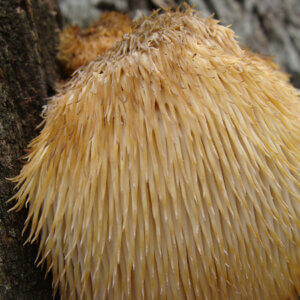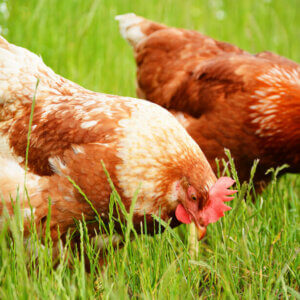I was so excited. It was a complete surprise. That little goat wasn’t supposed to be pregnant. The fat round goat over there was supposed to be. Not this tiny girl! (The round goat turned out not to be pregnant.)

This was my first goat pregnancy and can I just say I was all grins. I was calling the whole family out to feel the baby kicking and to look at the tiny udder forming.
But after the first dose of excitement I was running hither and thither preparing for this goat’s pregnancy. Thankfully I had already been slowly preparing for the round goat’s pregnancy and knew the answer to, “My goat is pregnant, now what?”
Let me show you how to answer that question. I can’t give you all the information you need but I can give you all you need to begin.

First, Take Care Of The Doe
The doe needs the proper nutrition to stay healthy and grow those babies in her tummy. Feed her good quality hay and alfalfa. Grain can be added if she needs more weight. How much to feed depends on your doe. You want her to have plenty but not get overweight.
I have full-sized dairy goats and feed them free-choice hay. The goats get all the alfalfa they can eat in between one feeding and the next. They are given a small amount of grain during pregnancy which is increased in the last month.
It is always important for your goats to have a good mineral supplement and now it is even more important. Make sure she likes it and will eat it. Kelp also contains a host of good minerals for a pregnant doe.
Be very consistent on keeping the does feet trimmed.
Be aware of the changes your doe is going to undergo. Goats are pregnant for on average 150 days or five months. The first three months you won’t see much change. If this is her first time kidding you should see a tiny udder start forming.
The final two months are when the changes really start happening. In the fourth month, her vulva will start to enlarge. She will start to fill her udder but it will still be quite small. He stomach will start to get visibly bigger.
You might be able to feel the babies by placing your hand on the lower right side of the stomach.

The final month the babies do most of their growing and they get hair, causing the doe to need the most minerals in this final month. The doe’s stomach will get huge and she will start to waddle.
You should be able to feel the babies kicking now. Sometimes you can even see it!
Most does’ activity will slow down. The udder continues to grow. The doe might start to nest and seek solitude. She might get grumpy and push other goats around more. She could seek the comfort of your hand or want nothing to do with you.
The important thing is to be patient with your doe understanding pregnancy takes work and your doe is undergoing many changes.

During this time keep an eye out for sickness or complications. Some warning signs are:
- Refusal to eat
- Blood on the tail or bloody discharge
- Losing fur
- Pale or white skin around the eyes
- Doesn’t want to walk
- A hot udder
Preparing Yourself For The Kidding Experience
No, it isn’t the same. It is a bit different. This is focused on you. I boil it down to three things: write, read, and watch.
Write
I mentioned the notebook or phone in the birthing kit but really you use it throughout the pregnancy. A calendar works too. Start with writing down the most important: her due date. Then it is simple and quick things like “Discharge started” or “Felt kicks.”
Read
Just like you are doing right now. Read some goat birthing stories so you know what a normal birth looks like and how to tell when something goes wrong. You also need to read up on signs of labor and goat kid positioning with information on how to help out if you can’t get someone with experience or a vet to come.

Watch
Watch some goat births. It is a huge help to be able to see a real goat birth and it helps you to relax. Goats give birth all the time and normally nothing bad happens.
Preparing For The Day Of Kidding

You need backup. Someone who has been through a goat pregnancy before and who is willing to answer your questions.
A close-by goat friend is the best option. A good goat vet is the next but they can be hard to find and are really busy.
If you can’t find either then you can always join this friendly Goat Forum. It is free to use and full of experienced goat owners that will answer your questions in a timely and helpful manner.
You need a kidding stall. Goats like to be away from other goats when they kid.
This is also safer for the doe and the kids. No one can trample the kids, beat up the does or interfere with bonding.
The kidding stall needs to be clean and layered with straw or hay. Shavings stick to the baby goats and the mother has a hard time cleaning them.
It needs to be secure and safe—no small crevices that baby goats can get stuck in or escape by.
Water buckets need to be hung off the ground. Hang the buckets high enough so that if the mother delivers standing up the baby can’t fall in and drown.
The mother should be moved into her kidding stall at least a week and a half before she kids. I like to move her in earlier, giving the doe time to relax and get used to her surroundings. She can also eat undisturbed.

Emily Koopmann / Insteading
You need a birthing kit. This is the bag filled with everything you might need to help your doe kid. You don’t have to use everything or anything but it is important to have.
Birthing kits can vary but here is what I put in mine:
- Paper Towels – three to five big rolls. Use them to dry mommy and baby goat off and pick up goo.
- Garbage Bags – A must have to put all the dirty and yucky stuff in.
- Towels – Use for a soft nest or for drying. I have a doe that is an avid paper towel eater.
- Bulb Syringe – Clear the kid’s mouth and nose of fluid.
- Notebook or your phone –For writing important happenings down like when she started pushing or when was the first kid was born. Taking pictures of each happening is a wonderfully easy way to keep records. Plus, who couldn’t take pictures?
- Flashlight and/or Lamp – A must if you don’t have lighting in your kidding stall. It is also used to check the position of the kid when the kid starts to show in its bag. You should see a nose and two hooves.
- Olive oil, in squirt bottle – Squirt all on the does back end for a safe lubricant. Good for a lubricant if you have to go in as well.
- Alcohol – I like to use the alcohol swabs that are individually wrapped. Use to clean and disinfect the kid’s cord.
- Scissors – Use to trim long umbilical cords.
- Dental floss – I have not had this happen but if the kid’s umbilical cord is bleeding use the floss to tie it off.
- Soup, warm water, and exam gloves – These are for the emergency of you having to go in.
- Bottle and nipple – Some kids are rejected by their mothers. If they are you need a bottle on hand to feed the kids. I use human baby bottles. Some will need a small cross cut across the nipple for better milk flow. Buy at least two bottles of two different kinds.
- Thermometer – For a sick or weak kid. Knowing the temperature is helpful for you or your vet to diagnose the problem. You also can’t feed milk to a cold kid. You must raise its temperature first.
- Blankets for mom and babies – Birthing is hard work and mommy goat might need help staying warm. Putting a blanket over her can help her relax. Good to have for baby goats in case weather gets cold or babies are weak.

Make sure everything is super clean and place each item in its own separate bag. All items then go into one big bag. Place that birthing bag in an easily reached area known to all. Then when you yell, “Quick, babies! Grab birthing kit!” Your fetcher won’t have to ask you to speak rationally about its location.
The Last Thing To Do—Enjoy
That’s right. Enjoy your goat’s pregnancy. It is so much fun seeing them grow round, feeling baby goat kicks, wondering what color they are going to be, or is it a boy or girl or both or two girls or three boys … you get it.
It is a wonderful time of surprise and excitement. And it is only the beginning. Baby goats are going to come and then the fun will really begin!









































Leave a Reply